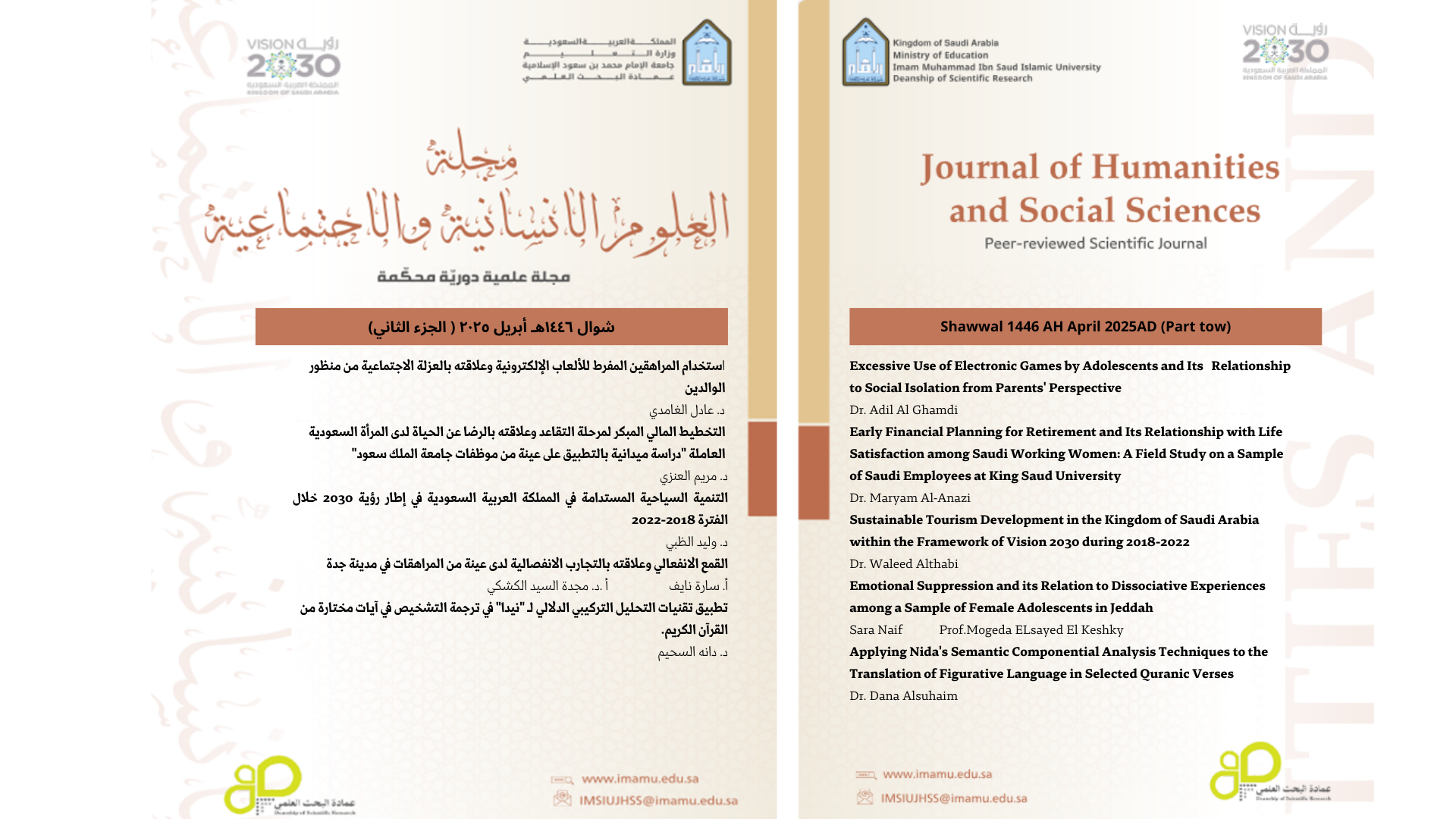Applying Nida's Semantic Componential Analysis Techniques to the Translation of Personification in Selected Quranic Verses
Keywords:
Nida’s semantic analysis, personification, componential analysis, Verses, QAbstract
This qualitative comparative research focuses on investigating the effectiveness of Nida’s Semantic analysis techniques in translating Sacred Texts, specifically Quranic verses, to demonstrate the application of Nida’s semantic componential analysis in exploring and describing the shifts employed by four different translators when rendering the rhetorical feature of personification in selected verses of the Holy Quran. This paper applied componential analysis from a new angle on a more specific rhetorical aspect, namely personification. This research analyzed the translations of two samples of marked personification used throughout the Quran found in the translation versions of Marmaduke Pickthall 's (1930), Arthur John Arberry (1955), Abdullah Yousef Ali (1983), and Muhammad Habib Shakir (2003). Despite its limitations towards some figurative speech terms and cultural expressions, Nida’s componential analysis in this paper has proved its effectiveness in the analysis and translation of figurative speech, specifically personification in the ST and TT. The result of the comparison demonstrated that naturalness and smoothness of translation preserving the same effect of the original text could be achieved by applying the technique of componential analysis of meaning.




